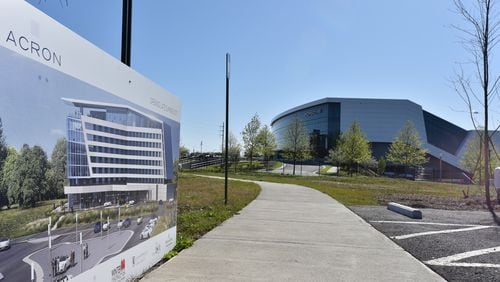I remember well the boom times before the Great Recession. I was a 20-something economic developer working for the Georgia Department of Economic Development, and success was determined by the number of new jobs and capital investment I could announce.
Then came the Great Recession, and things ground to a halt. It took a while to work our way out of that, of course. But when the economy finally came back, it roared – fueled by industrial development, an explosion in e-commerce and financial technology, new corporate headquarters and mixed-use developments.
After I transitioned to working for Douglas County, it seemed that almost overnight I was forced to refocus on planning, zoning, workforce, equity, and transportation. It happened so fast that it took me and many of my colleagues a minute to get our arms wrapped around it. And that required working with people across jurisdictional boundaries.
So, in 2012, the Atlanta Regional Commission brought together economic development leaders from across the region to develop a new strategy – a way of thinking, really – about economic development in metro Atlanta. This meant focusing on the competitiveness of the entire region, as well as our individual geographies.
Economic development representatives from across the 10-county region got together and realized that business prospects didn’t focus on jurisdictional boundaries, but rather on broader issues like cost of living, drive times and how to move products.
And so the Metro Atlanta Regional Marketing Alliance was formed, made up of the 10 core county economic development organizations plus Invest Atlanta. Collectively, we promote the assets of the entire Atlanta region, though individually we still compete on projects.
This approach has already proved successful. But in many ways, it’s only a start.
We have an opportunity to further strengthen our efforts by leveraging key economic development tools at our disposal. Specifically, I’m talking about Joint Development Authorities, which were created by the state of Georgia more than 20 years ago. We have quite a few of these in the state, including here in the Atlanta region.
But our JDA’s can do so much more. They have the capacity to activate projects of regional significance.
Why consider this? The landscape is competitive, the opportunities are abundant, and the needs are persistent. We also can’t afford to let a project fail because we don’t have the local capacity to close it. We need the backing of a super-jurisdictional body that can minimize the risk and maximize the benefit.
For example, consider the Georgia Aerotropolis Corridor – 62,000 acres of property along a single parkway extending from Hartsfield-Jackson Airport. This corridor has the capacity to become home for national and international companies, as well as their executives and employees.
This is a generational project that could assure Georgia’s international competitive leadership in innovation, education and technology into the next century.
But it’s a $60 billion to $100 billion dollar project, requiring right of way acquisition for road and transit expansion, water and sewer infrastructure, parks, schools and other infrastructure. It’s impossible for any single jurisdiction to afford such a monumental task. It takes the entire region.
We don’t have to look far to find examples of successful ventures of regional capacity. Newton, Morgan, Jasper and Walton counties came together more than 10 years ago to develop a business park called Stanton Springs.
The jurisdictions agreed to a joint partnership to recruit quality jobs and investment, leveraging their joint bonding capacity and share revenue. Now, Stanton Park is home to the 1,000-employee Shire Pharmaceuticals and just recently welcomed the new Facebook Hyperscale Data Center.
This model holds enormous potential for metro Atlanta, but only with the support of a regional economic development body that does more than market, but also finances.
For the entire region to prosper, we must activate our JDA’s – or even consider creating a 10-county authority leveraging our combined bonding capacity to finance projects to make our region a place where truly everyone has a chance to participate in our prosperity.






